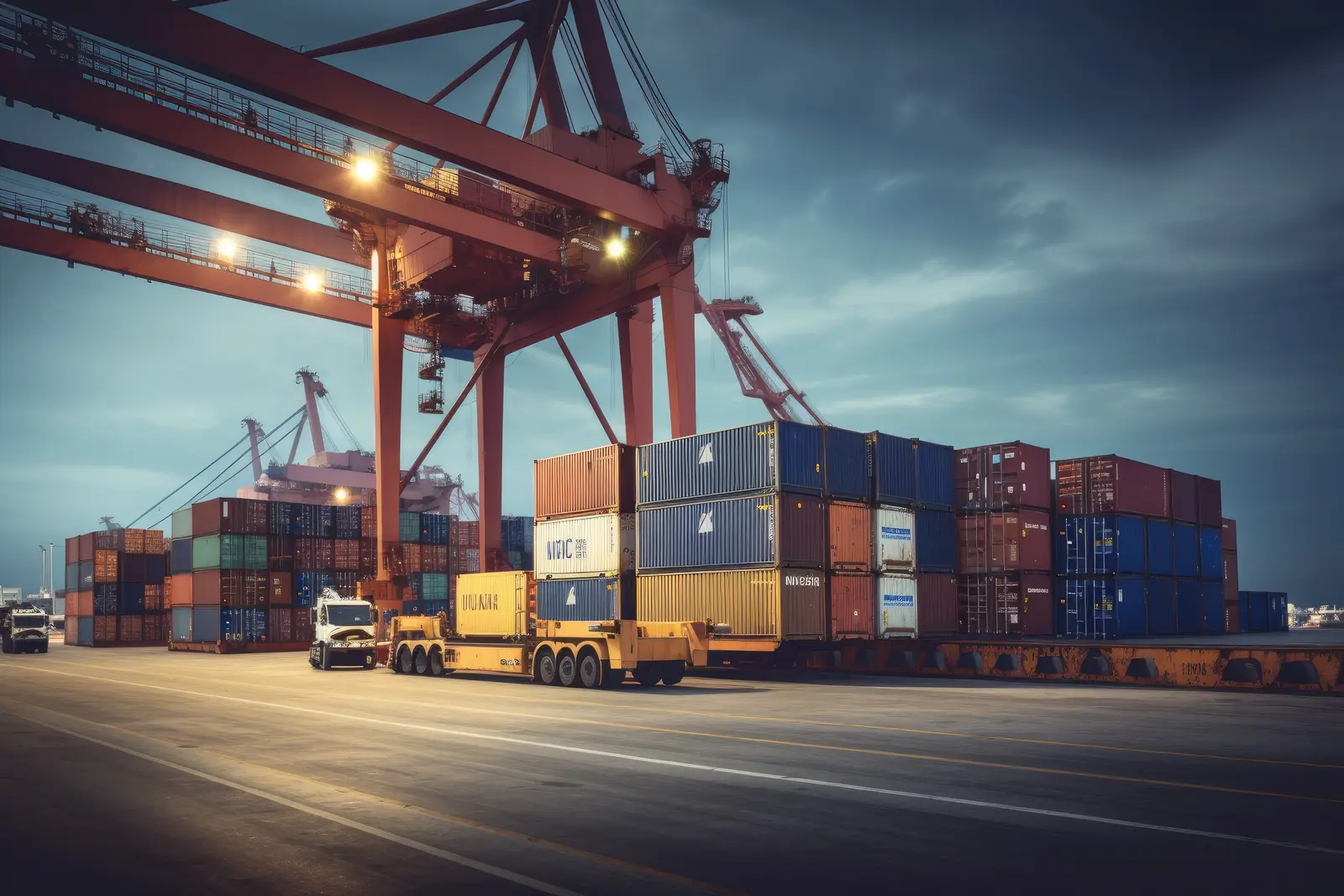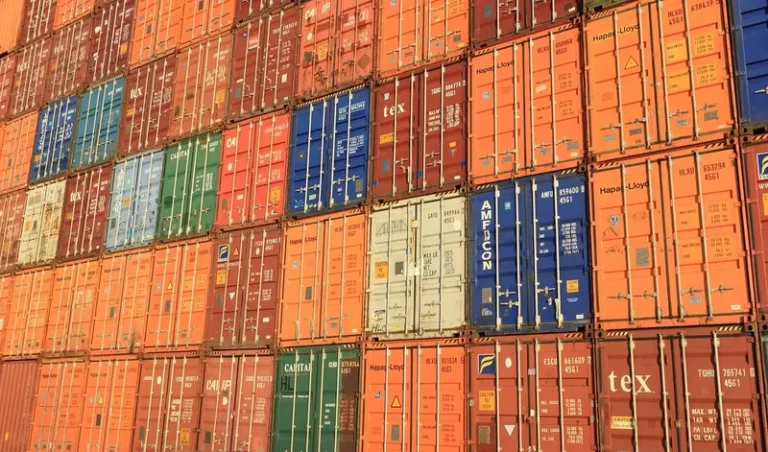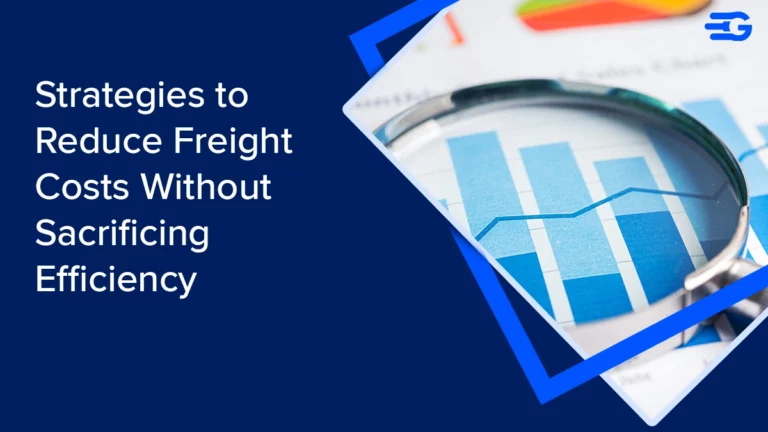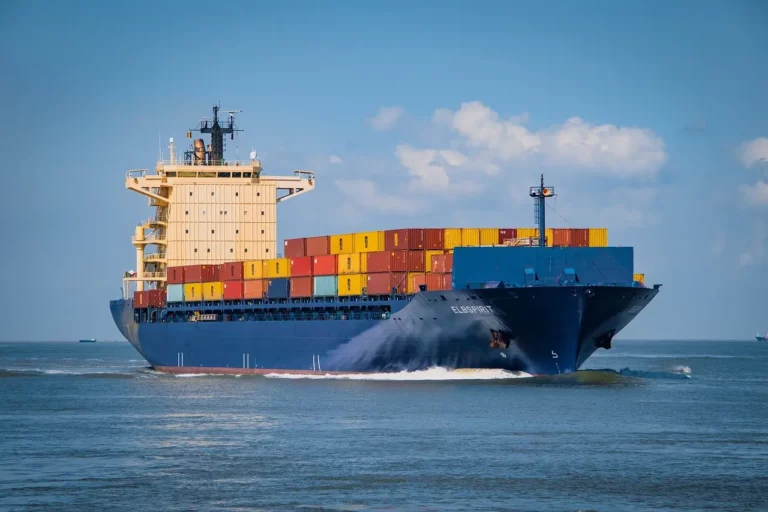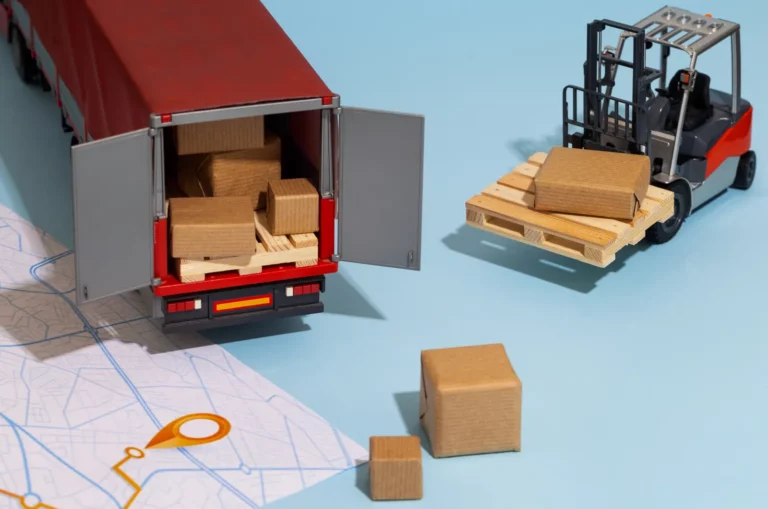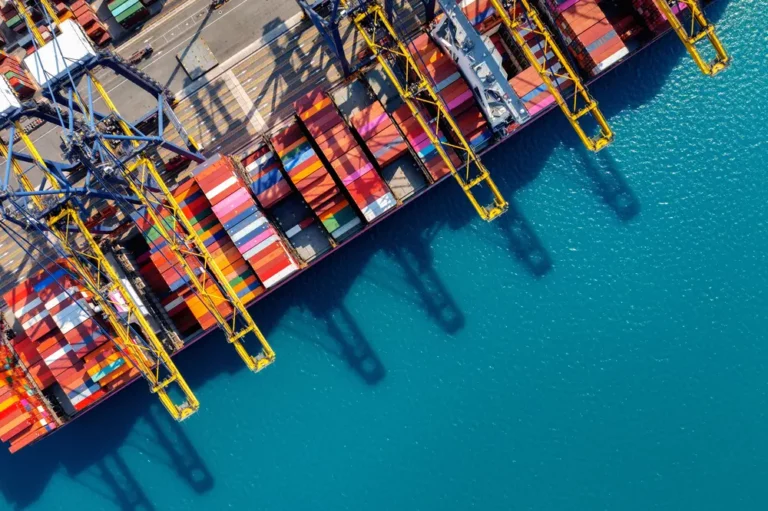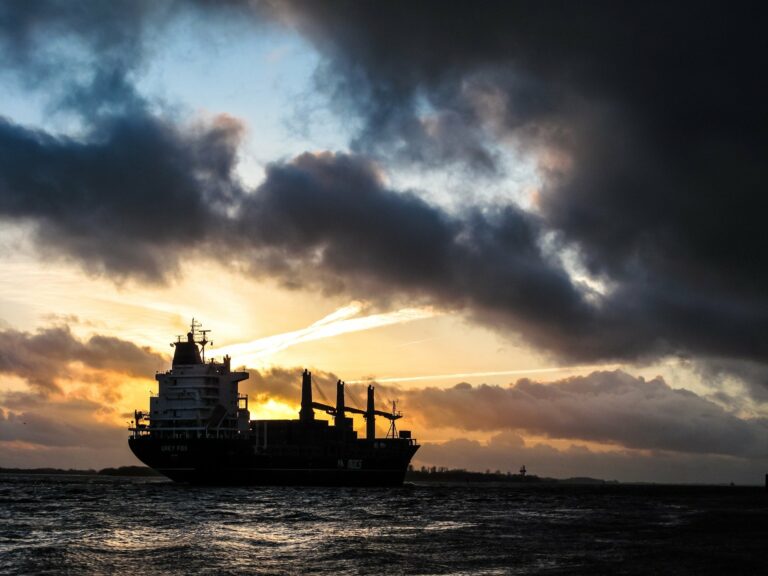The Comprehensive Guide to Ocean Freight: Streamlining Global Logistics
Introduction to Ocean Freight
Ocean freight is the backbone of global trade, connecting economies across continents through the vast expanse of the world’s oceans. It’s like the silent giant of logistics, quietly moving massive amounts of goods from one busiest port to another, shaping the flow of commerce on a grand scale.
When we talk about ocean freight, we’re talking about shipping goods via sea routes. It’s the most common way stuff gets from one country to another, accounting for a whopping 90% of the global cargo movement. Just imagine those big ships stacked high with containers, chugging along the waves, carrying everything from electronics to textiles to automotive parts of the global cargo movement
Now, let’s break down the types of ocean freight. There’s Ex Works (EXW) where the supplier takes care of getting the goods to the factory or manufacturer. Then there’s Free on Board (FOB), where the supplier delivers the goods to the port or terminal in their country. Cost, Insurance, and Freight (CIF) covers transport to the buyer’s country, including insurance costs. Finally, Delivered at Place (DAP) or Delivered Duty Unpaid (DDU) gets the goods right to your doorstep, but you’re responsible for tariffs and taxes.
But why does ocean freight matter so much? Well, for starters, it’s cost-effective. Shipping by sea is usually much cheaper than other methods, which is great for businesses trying to keep their costs down and prices competitive. Ocean freight might be the only option for big, heavy stuff like machinery or furniture. Airplanes can be picky about what they carry, but ships are the quintessential agony aunts for logistics, that can help everything and anything.
Ocean freight is known for its reliability and consistency. While shipping by sea may take longer compared to air freight, it offers greater predictability in terms of scheduling and delivery. Ports operate on regular schedules, and once a shipment is onboard a vessel, it follows a predetermined route, minimizing the risk of delays due to weather conditions or airspace congestion. This reliability is especially crucial for businesses that require steady and consistent supply chains to meet customer demands.
Understanding Ocean Freight Services
Ships have ample space to accommodate bulky machinery, vehicles, or large quantities of goods. This makes ocean freight the go-to choice for industries dealing with oversized cargo, such as construction, manufacturing, and automotive. Such scalability makes ocean freight suitable for businesses of all sizes, from startups to multinational corporations, allowing them to tailor their shipping solutions according to their specific needs and budget constraints.
But when it comes to shipping goods via containers across the vast seas, there are two major players: LCL (Less Than Container Load) and FCL (Full Container Load) shipping options applicable to several types of containers. These acronyms might sound like jargon, but they represent distinct approaches to containerized shipping, each with its own set of pros and cons.
FCL, as the name suggests, involves shipping your goods in a dedicated, full container. It’s like having your private vessel within a vessel. With FCL, you pay for the entire container, regardless of whether it’s fully packed or not. This option is often favored by shippers dealing with large volumes of goods, enough to fill a 20 or 40-foot container. However, even if your shipment doesn’t fill the container, FCL can still make sense, especially when the difference is negligible, usually around 10 cubic meters (CBM).
To know more about LCL shipping and its impact on logistics, also read:
How LCL Shipping helps in efficient logistics
Meanwhile, LCL is all about sharing. Your goods cozy up with shipments from other parties in the same container, effectively splitting the space and costs. This option is particularly attractive for those shipping smaller volumes or seeking flexible delivery arrangements. LCL shipments typically range between 1 to 10 CBM, making it an ideal choice for loads that don’t warrant a full container.
- With FCL, you’re footing the bill for the entire container, regardless of its capacity utilization. Conversely, LCL charges you based on the space your shipment occupies, often resulting in higher costs for goods that consume significant space within the container.
- Speed plays a role in the decision-making process. FCL shipments tend to arrive faster than LCL, as they bypass the consolidation and de-consolidation processes required for LCL shipments. This streamlined journey translates to shorter transit times and expedited delivery for FCL consignments.
- When it comes to security, FCL holds the upper hand. With your goods occupying the entire container, there’s minimal handling and reduced risk of damage, theft, or loss compared to LCL, where goods are subject to more frequent handling and potential risks during consolidation and de-consolidation.
- In terms of flexibility, LCL takes the crown. It’s ideal for businesses with diverse delivery needs, allowing shipments to be split across multiple destinations or facilities with ease. On the other hand, FCL might require additional logistics and costs for splitting deliveries across destinations.
Why Ocean Freight can be a better bet?
Shipping goods by sea tends to be significantly cheaper than other modes of transportation.
In addition to its practical advantages, ocean freight also boasts green and (or) sustainable supply chain management.
Delving into the aspect of cost-effectiveness, when you’re a business looking to transport a large quantity of goods from one continent to another. Now, if you were to opt for air freight, you’d be looking at sky-high costs.
Airplanes, while fast, come with hefty price tags, especially for bulk shipments. On the other hand, ocean freight offers a much more wallet-friendly alternative. Ships, with their immense cargo capacity, can transport vast volumes of goods in a single journey, effectively spreading out the transportation costs. This means that whether you’re a multinational corporation or a small-scale enterprise, ocean freight presents a cost-efficient solution for your shipping needs.
But it’s not just about saving money; it’s also about being kind to the planet. Let’s talk about environmental impact. Did you know that ships are far more fuel-efficient than airplanes? It’s true! While airplanes guzzle fuel like there’s no tomorrow, ships chug along the ocean, emitting significantly fewer greenhouse gases per unit of cargo transported.
This lower carbon footprint aligns perfectly with the growing emphasis on sustainability and environmental responsibility in today’s business landscape. By choosing ocean freight over air freight, businesses can significantly reduce their ecological footprint while still meeting their logistical needs.
Ports operate on well-established schedules, and once your shipment is onboard a vessel, it follows a predetermined route, minimizing the risk of delays due to weather conditions or airspace congestion. This reliability is crucial for businesses that rely on steady and consistent supply chains to meet customer demands.
Moreover, ocean freight offers scalability and flexibility, suitable for businesses of all sizes, from startups to multinational corporations, allowing them to tailor their shipping solutions according to their specific needs and budget constraints.
Also Read: Explore Top Ocean Freight Software
Planning and Executing Ocean Freight Shipments
Planning and executing ocean freight shipments can seem daunting, but with the right approach and understanding of the process, it can be smooth sailing. Let’s dive into how to ship with ocean freight, step by step.
1. Research and Get Quotes: The first step in shipping with ocean freight is to research different freight forwarders and shipping companies to get quotes. Reach out to several providers to compare rates, services, and transit times. This will help you choose the option that best suits your shipping needs and budget.
2. Select a Freight Forwarder: Once you’ve received quotes, it’s time to select a freight forwarder to handle your shipment. Look for a reputable company with experience in ocean freight and a track record of reliability. Your freight forwarder will be your partner throughout shipping, so choose wisely.
3. Negotiate Terms and Contracts: Work with your chosen freight forwarder to negotiate the terms of your shipping contract. This includes details such as pricing, delivery schedules, and liability coverage. Make sure to clarify any questions or concerns you have before finalizing the contract.
4. Prepare Shipping Documentation: Before your goods can be shipped, you’ll need to prepare the necessary shipping documentation. This may include a bill of lading, commercial invoice, packing list, and export/import permits. Your freight forwarder can assist you in completing and submitting these documents correctly.
5. Arrange Export Haulage: The next step is to arrange for export haulage, which involves transporting your goods from your warehouse or manufacturing facility to the freight forwarder’s warehouse. This may be done using trucks, trains, or other modes of transportation, depending on the location of your goods and the shipping company’s capabilities.
6. Complete Export Customs Clearance: Once your goods have been transported to the freight forwarder’s warehouse, they will need to undergo export customs clearance. This involves providing documentation and declarations to customs authorities to ensure compliance with export regulations. Your freight forwarder will guide you through this process and handle the necessary paperwork on your behalf.
7. Handle Origin Handling: After customs clearance, your goods will undergo origin handling, where they will be inspected for quality and prepared for shipping. If you’re shipping a full container load (FCL), your goods will be loaded directly into the shipping container. If you’re shipping less than a container load (LCL), your goods may be consolidated with other shipments before being loaded onto the container.
8. Ocean Freight Transportation: With your goods properly packed and loaded, they will embark on their journey via ocean freight. The shipping container will be loaded onto a cargo vessel, which will transport it to the destination port. The duration of this stage will vary depending on factors such as distance, shipping route, and weather conditions.
9. Import Customs Clearance: Upon arrival at the destination port, your goods will undergo import customs clearance. This involves submitting paperwork, paying any required fees or duties, and declaring the contents of the shipment to customs authorities. Your freight forwarder will handle these procedures on your behalf to ensure a smooth clearance process.
10. Handle Destination Handling: After customs clearance, your goods will undergo destination handling, where they will be inspected for damage and sorted for final delivery. If necessary, the shipping container will be opened, and the goods will be unloaded and prepared for transportation to their final destination.
11. Arrange Import Haulage: The final step is to arrange for import haulage, where your goods will be transported from the destination port to your desired delivery location. This may involve trucks, trains, or other modes of transportation, depending on the distance and accessibility of the final destination.
By following these steps and working closely with your freight forwarder, you can successfully plan and execute ocean freight shipments, ensuring your goods reach their destination safely and on time.
As much as such an intricate procedure enables smooth operations, there is a one-stop solution for your needs, GoComet.
Challenges in Ocean Freight
Common challenges in ocean freight shipping, such as longer transit times and the potential for delays, have traditionally plagued the industry. However, with the advent of digitization, these challenges are being effectively addressed by logistic management software, leading to improved reliability and tracking throughout the shipping process.
Longer transit times in ocean freight are often attributed to factors such as port congestion, adverse weather conditions, and inefficient routing. Digitization has enabled greater visibility and transparency into the entire shipping process, allowing businesses to proactively identify and mitigate potential delays.
Real-time tracking solutions provide accurate information on the location and status of shipments, enabling businesses to anticipate delays and adjust their supply chain strategies accordingly. Longer transit times in ocean freight are often attributed to factors such as port congestion, adverse weather conditions, and inefficient routing.
Digitization has enabled greater visibility and transparency into the entire shipping process, allowing businesses to proactively identify and mitigate potential delays. Real-time tracking solutions provide accurate information on the location and status of shipments, enabling businesses to anticipate delays and adjust their supply chain strategies accordingly. Gain insights into port statuses effortlessly with GoComet’s Port Congestion Tool.
Digitization has facilitated collaboration and communication among stakeholders involved in the shipping process, including shippers, carriers, freight forwarders, and customs authorities. By leveraging cloud-based platforms and communication tools, stakeholders can exchange information in real-time, enabling faster decision-making and problem-resolution.
We at GoComet have played a pivotal role in driving the digital transformation of the ocean freight industry. Our platform offers advanced tracking and visibility features that enable businesses to monitor their shipments in real time, from origin to destination.
We as a platform enable users to easily compare freight rates from multiple carriers, book shipments, track cargo in real-time, manage documentation and compliance, and analyze shipping data to identify cost-saving opportunities. By centralizing and automating these tasks, GoComet helps businesses streamline their logistics operations, reduce costs, and improve efficiency.
Furthermore, GoComet’s platform is built on advanced technologies such as artificial intelligence and machine learning, which enable predictive analytics and proactive decision-making. By analyzing historical shipping data and market trends, GoComet can provide valuable insights and recommendations to optimize shipping routes, carrier selection, and freight rates.
In conclusion, the ocean freight industry is undergoing significant transformation, driven by digitalization and innovative solutions like GoComet. With challenges such as longer transit times and potential delays being effectively addressed through advanced tracking, visibility, and predictive analytics, businesses are experiencing improved reliability and efficiency in their shipping operations.
Looking ahead, ocean freight systems are poised to undergo even more advantageous changes as technology continues to evolve. With enhanced transparency, collaboration, and efficiency, the future of ocean freight shipping holds immense promise for businesses seeking to navigate the complexities of international trade with confidence and success.
